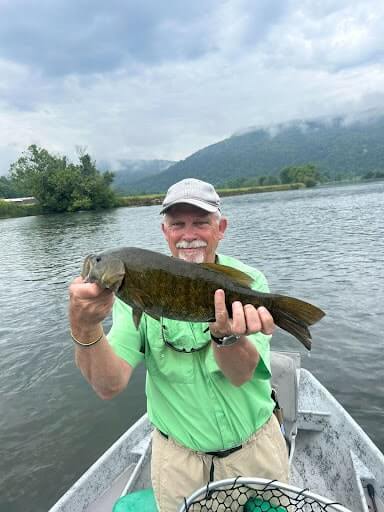
Holston Proper Tn Smallmouth
Fishing the Holston River in Kingsport, Tennessee
The Holston river is the only river that Southern Appalachian Anglers runs for smallmouth bass that is a TVA dam-controlled river or “tailrace”. Unlike the French Broad or the Nolichucky rivers, the water levels of the Holston are entirely reliant upon the daily water releases for hydroelectricity from the Fort Patrick Henry dam. Just downstream of Boone lake where the Watauga and South Holston tailraces end, Fort Patrick Henry Lake begins. Downstream of the Fort Patrick Henry dam marks the beginning of East Tennessee’s finest river smallmouth bass fishery, the Holston. Our licensed Tennessee guides run roughly ten to twenty miles of this gorgeous fishery that cuts through the rolling hills of Kingsport.
Holston River Smallmouth Fishing
The Holston is known amongst our guides as being the widest river we float with a drift boat, providing many different opportunities for fish. Though it boasts some of the highest quality smallmouth bass that we have to offer, the entire fishery is an excellent source of crayfish, and many different types of baitfish that promote an extremely healthy smallmouth population in general. If you’re lucky, you may find some of the largemouth bass that run up into the Holston from its outlet in Cherokee Lake!
Techniques Used
The Holston is a long, wide, and mostly shallow river. Though it has its deeper spots, they are fewer and father between. Timber on the river bank, rock shelves, grass mats, and points, are on a guides mind when looking for fish here. Conventional tackle or “spin” Anglers can expect to use medium-light-fast to medium-heavy rods paired with 2500 series reels. Common conventional baits used are paddle tail swimbaits, soft plastic jerkbaits (flukes), texas rigged senkos, and even a variety of topwater patterns to get the job done. Fly fisherman can expect to run 9-10’ long, 7-8 weight fly rods, paired with sink tip or floating fly lines. A variety of poppers such as the wiggle minnow and streamers matching the baitfish population in the wooly bugger category are commonly used.

